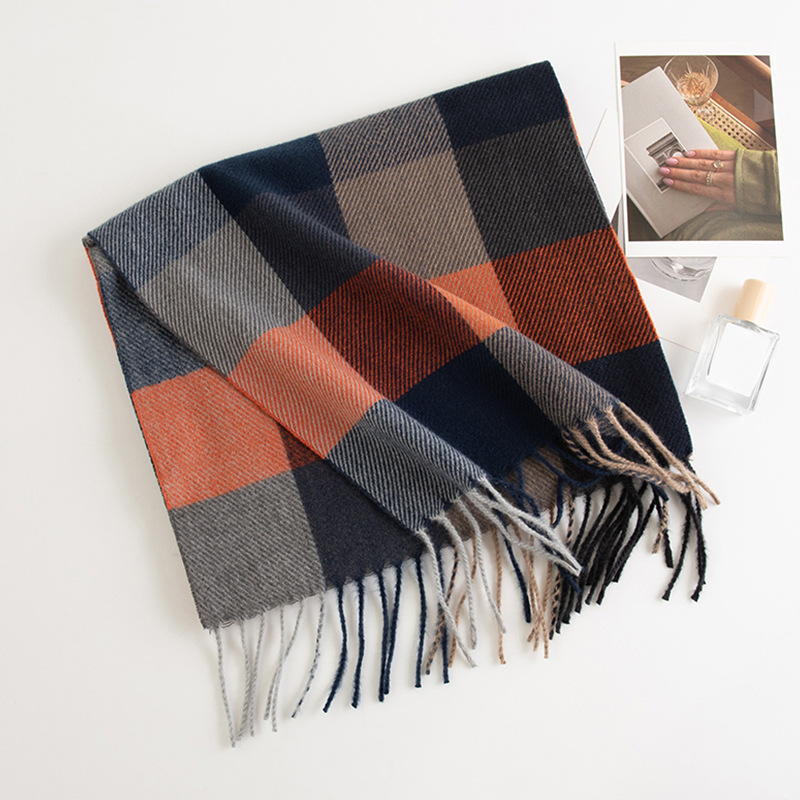The production process of cashmere yarn, which is refined from cashmere as raw material through a complete spinning process and strict quality control system.

Cashmere yarn is divided into coarse cashmere yarn, fine cashmere yarn, and semi fine cashmere yarn according to different spinning processes; Divided into knitted cashmere yarn and machine woven cashmere yarn according to their uses; According to the cashmere content, it is divided into pure cashmere yarn and blended cashmere yarn. Among them, cashmere yarn with a cashmere content higher than 30% but lower than 95% is considered cashmere blended yarn, while cashmere yarn with a cashmere content lower than 30% is not considered cashmere yarn. The knitting factory selects different counts of cashmere yarn (such as 2/26, 3/68, 2/80, etc.) according to the order requirements to process cashmere sweaters or other cashmere products with different needle shapes and styles.

Special reminder: Cashmere yarn specifically refers to cashmere yarn, without the term "sheep wool". The so-called "sheep wool" is actually fine wool, which has nothing to do with cashmere. The price difference between the two is 25000 li!
The production and processing of cashmere yarn has a complete process flow, and each link is crucial and interconnected. Taking woolen cashmere yarn as an example, its production process is as follows:
Non plush combing → dyeing → dehydration → drying → blending → combing → fine yarn → winding → doubling → packaging, as illustrated below:
Dye, dehydrate, and dry the combed non plush yarn according to the order requirements (if the order is for natural or natural colored cashmere yarn, there is no need to dye, dehydrate, and dry it). Hemao (also known as Hemao) process: According to the process requirements, the composition of the mixture (various fiber raw materials used for spinning) is processed (such as loosening, impurity removal, etc.) → the processed fibers are evenly mixed according to the wool ratio, and an appropriate proportion of Hemao oil must be added during this process.

Combing process: Use a combing machine to process the mixture of the above and wool (also known as wool) into coarse yarn (also known as "small wool")
Fine yarn process: Use a fine yarn machine to stretch and twist the coarse yarn (also known as "small wool") that is combed during the above combing process to form fine yarn, and then roll it into a certain shape of yarn spikes.
Tube and Twist Process: Use a winding machine to replace the fine yarn with a tube and wrap it around the tube, while removing any thin or coarse yarn strips. Then, use a doubling machine to double and fold the single yarn. Finally, use a double twisting machine to twist the stranded yarn and wind it into yarn. According to customer orders and subsequent knitting needs, pack the finished cashmere yarn in sealed bags. It is recommended to put moisture-proof paper on both sides of the cardboard box to avoid rainwater erosion during storage and transportation. If cashmere yarn needs to be stored for a long time, it is recommended to put a 99RONG moisture-proof, mold proof, and moth proof sachet in the yarn tube!

The production of high-quality cashmere yarn requires high-quality cashmere raw materials, scientific process flow, and strict quality control system, all of which are indispensable! Take a look at the dazzling array of "cashmere yarn" on the market, where the prices vary greatly and the quality varies greatly.
Contact: Eileen/John
Phone: +8613819490635
Tel: +86-0571-56503506
Email: eileen@fashiononeaccessories.com
Add: 12th Floor, Block B, Hengqi Business Center Dongning Road, Shangcheng District, 310002,Hangzhou, Zhejiang,China
We chat
